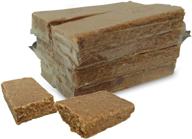
Review on 🔌 Complete Starter Kit: 1 Pack MQ-2 MQ-3 MQ-4 MQ-5 MQ-6 MQ-7 MQ-8 MQ-9 MQ-135 Gas Sensor Module Set by Kevin Woods

Should work very well for most hobbyist purposes
My expectations weren't that high as a Photoionization Detector (PID) would certainly be preferred, but for VOCs it's hard to come by, the data sheet is small and they're expensive* . I was surprised how well the MQ-138 works. No, you won't get super-accurate PPM readings, but if you need delta readings, they'll do what you want. In particular, I wanted to check for the presence of acetone, and it responds very well to acetone vapor. The technical description of this sensor can be found at the manufacturer (Chinese company Winsen). They provide instructions on how to use the touch component. Curiously, a company called Hanwei Electronics provides a more detailed technical description. So far I've come across at least 3 PDFs for the MQ-138, all of which have overlapping details but some of one another are missing. The boards that these sensors are installed on don't seem to have any documentation. Essentially, they all use an op amp IC as a voltage comparator, require 5V to heat the inside of the sensor, offer an analog output with a range of 0.5 to 5V relative to detectable gas concentrations, and a "digital" output practically only useful to detect presence (possibly to set off an alarm). The threshold can be changed by adjusting the potentiometer on the board. In short, the MQ-138, and probably all linear MQ sensors, are essentially variable resistors. The MQ-138 is expected to have a resistivity range of 20,000 to 200,000, with 200,000 meaning no detectable gas and 20,000 being the maximum detectable gas (anywhere between 500ppm and 3000ppm depending on vapor, 500ppm for toluene). However, this is affected by humidity and temperature, so you should take this into account when attempting to get a ppm reading. This sensor has a pre-heating time of 48 hours, which means it must remain switched on during this time. to get the most consistent readings. However, that *doesn't* necessarily mean that the sensor stops working as soon as you turn it on, or that you have to wait 48 hours every time you turn it on. In the event of a longer power failure, the resistance provided by the sensor module simply drifts away. As soon as I turned on the sensor module for the first time, it was able to detect acetone on a cotton swab placed next to it, so it had no problem detecting it even if it wasn't preheated. It's just about constantly resisting the work. If you turn on the sensor once a day, even if just for a few minutes, you don't have to worry about hours of preheating. The PDF manual recommends warming up the sensor for at least 48 hours if left idle for more than a month and 168 hours within 6 months. While preheating the MQ-138 sensor component, I measured the resistance and it stopped changing after 24 hours. YMMV In short, don't worry if you can start developing with this sensor right away. I found that the actual warm-up time is negligible. Turn it on and it will immediately return the expected values. Wait maybe a minute to ensure the heating element has reached full temperature. Having knowledge of electronics but rarely working with my own electronics, there are big gaps in knowledge and I expected the DOUT pin on the board to produce a digital signal. a reader that I could use with the GPIO pin on my Raspberry Pi. Well, it's *digital, but in the sense that it either turns on or off when the gas level crosses a threshold. It wasn't exactly what I was looking for. The analog pin (AOUT) is what you need if you want to get a rough idea of the actual gas level. Unfortunately, for my use case, the Raspberry Pi cannot read voltage levels. So if you plan to use this or any of the other MQ gas modules with one, you should probably both get an Arduino or an MCP3008 that can convert an analog signal to digital. Alternatively, if you can't wait for either of these things, you can remove the sensor component itself from the module and record the time it takes for the capacitor to discharge (>900nF works well). The shorter the discharge lasts, the more gas is present. In this case, make sure you find the PDF manual and use the right contacts. But is it worth waiting for real analog-digital devices? Most likely because it gives more useful output and should be a bit more specific (since Raspbian is not a real-time OS). There is a pinout on the touch component itself. Interesting. Each side of the sensor has 3 pins. The two middle pins (2 and 5) are used to supply power to the heating element inside. Polarity doesn't matter to them. The other pins (1 and 3, 4 and 6) are used for detection. I don't know why there are 2 detection pins on each side, but you need to connect the detection pins together on each side to form a pin, so you end up with 2 pins that you would run current through. I have no idea why that is. A guy on youtube did this for another MQ sensor, and the pdfs seem to indicate that's how it should be done, so I see why I'm doubting it will work. Again, polarity doesn't matter since it's actually a variable resistor. Just don't run current between the detector pins on one side as that could damage the sensor (i.e. the current must flow from side to side, not between 1 and 3 or 4 and 6). The great thing about this and other MQ modules is that you can use it standalone as there are LEDs on the board. Just provide VCC and GND and one of the LEDs will light up when there are enough VOC pairs. This is adjusted by a potentiometer on the circuit board. Is it very accurate? This remains to be seen. Is it super helpful? Possibly yes, if you want to track changes in VOC levels in real time and plot a chart, which is what I want to do, the MQ-138 works well enough. Or if you simply want to trigger an alarm at a certain gas threshold.
- Easy to use
- Quick Start Guide
New products
Comments (0)
Top products in 🚨 Household Sensors & Alarms

Xiaomi Mi Smart Sensor Set

45 Review

🚰 Govee Water Detectors, Adjustable 100dB Audio Alarm Sensor, Highly Sensitive Leak and Drip Alert, Ideal for Kitchen Bathroom Basement (Battery Included)

9 Review

🚰 Ensure Your Family's Safety: DIY Lead in Drinking Water Test Kit for City or Well Water - Quick 10 Minute Test - Single Pack

9 Review

Wireless Aqara Water Leak Sensor white for other countries

31 Review
Another interesting products

🔋 SOS Food Labs, Inc. 3 Day Emergency 3600 Calorie Food Bar - 72 Hour Package with 5 Year Shelf Life, Compact Size: 5"H x 2"W x 4.5"L

8 Review

🌧️ Premium Quality Disposable Rain Ponchos for Adults / Kids (6 Pack) - 50% Thicker Emergency Ponchos for Ultimate Waterproof Protection

8 Review

🍽️ S.O.S. Rations Emergency 3600 Calorie Food Bar (Cinnamon & Coconut, 2 Pack)

8 Review

Be Prepared For Anything With Quakehold! 70500 Evacuation Essentials Kit

9 Review

